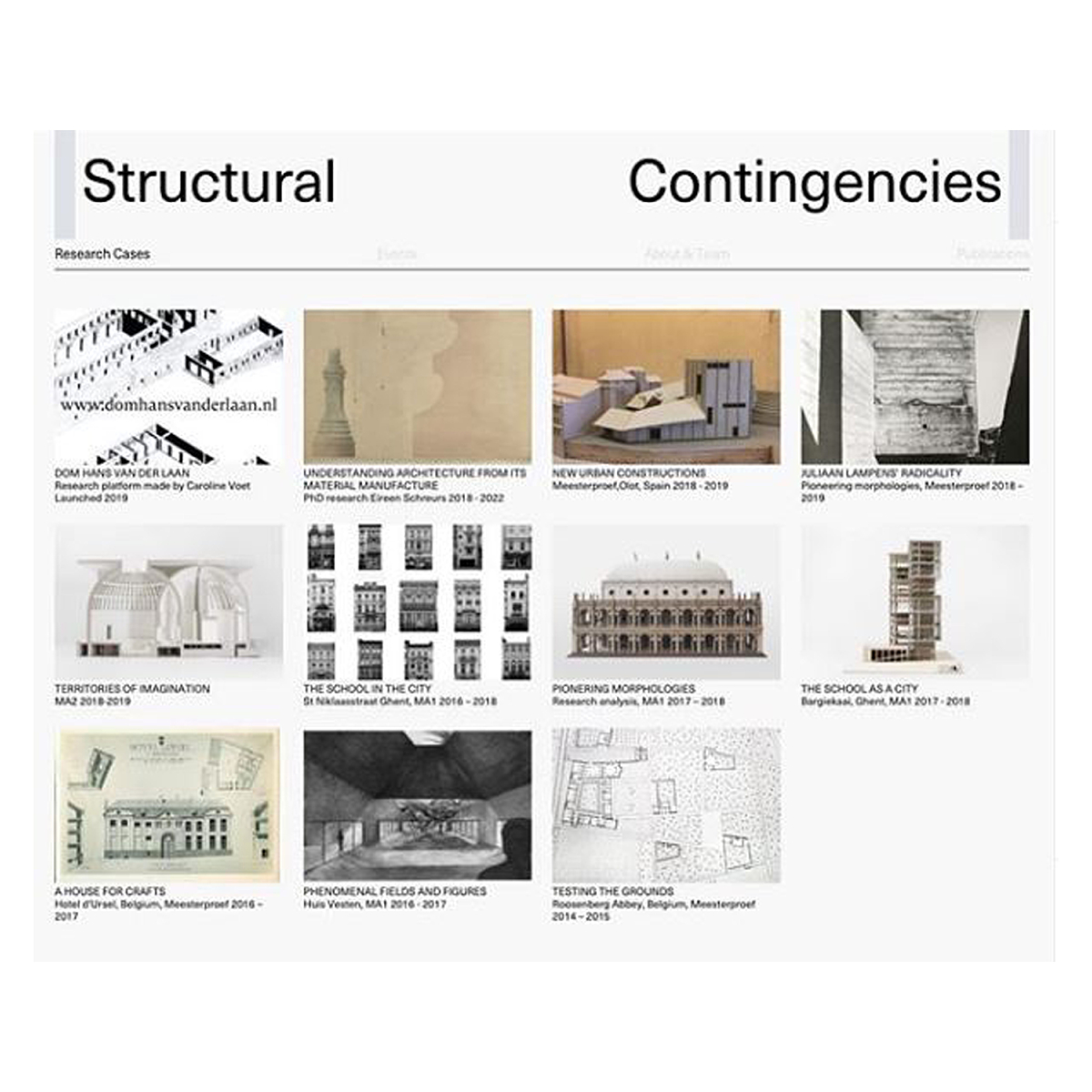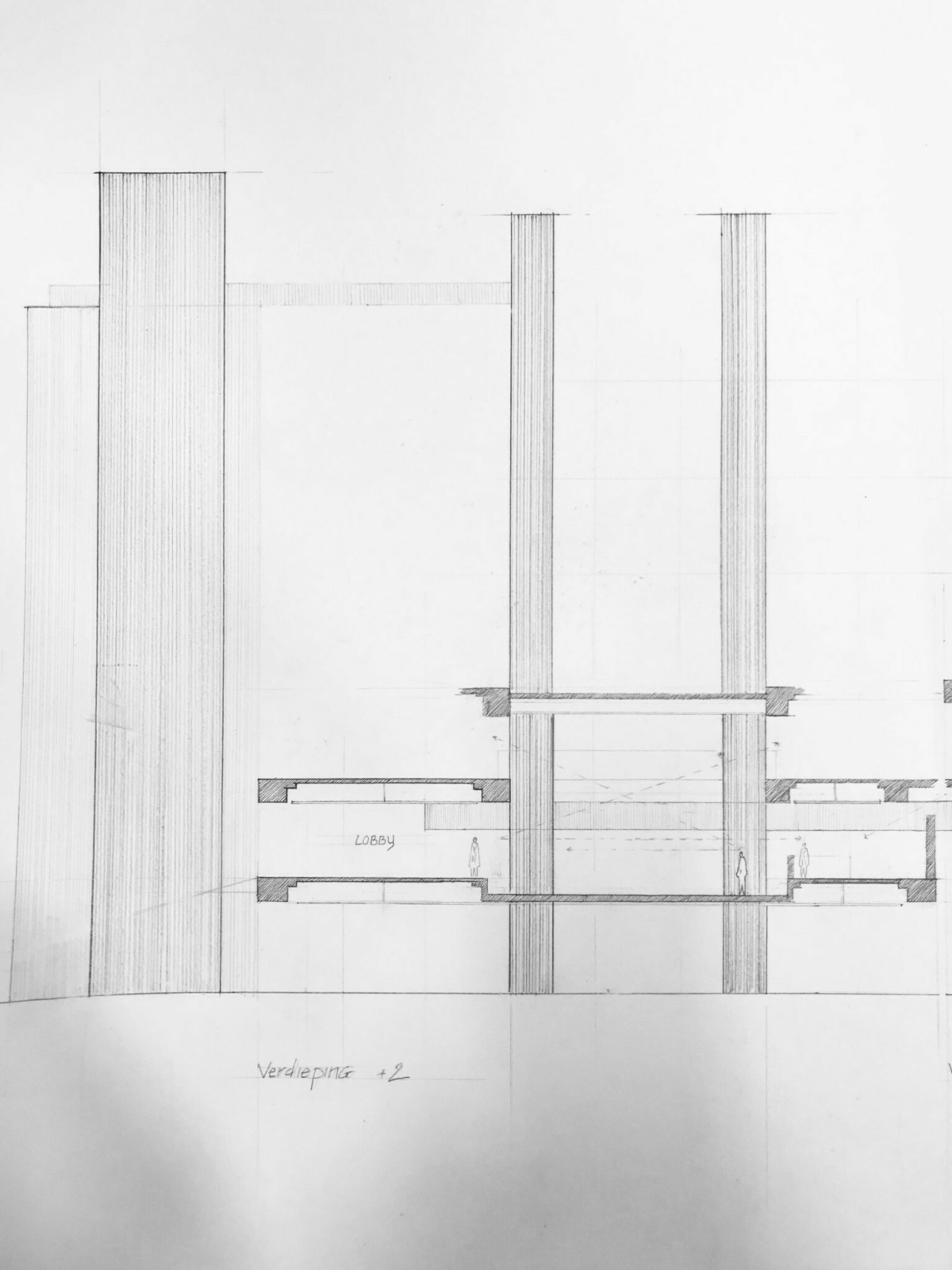Structural Contingencies, a research platform for exchange between Masterstudios, architectural practices and academic research, Faculty of Architecture, KU Leuven, Campus St Lucas Ghent

Structural Contingencies is a research platform at the Faculty of Architecture, KU Leuven, coordinated by Caroline Voet. It is built upon the exchange between Masterstudios, architectural practices and academic research, and is based at Campus Sint-Lucas Ghent.
The Studios Structural Contingencies undertakes a series of collective/individual projects exploring the architectural potential of transformation as a foundation to design large-scale construction projects. Trough the research of specific historical artifacts, urbanisms and atmospheres, through processes of abstraction and superposition in time, we create layered and critical contingencies for the current design practice.
At the heart of Structural Contingencies lies the autonomy of architectural language: the re-reading of material and structural details in their relation to the experience of the spaces they enclose. We work from the structural detail and the interior to the urban fabric, by (re)drawing and (re)modeling. Through strategies of re-use, mimesis and superposition, existing pioneering architectures are read carefully as primary and ontological structures and spaces. Aim is to reveal connections between design strategies and tools within their historical timeframe, and the architectural structures, spaces and atmospheres that strung from them.
https://structuralcontingencie...
